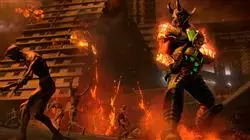University certificate
The world's largest faculty of video games”
Introduction to the Program
Become an expert in Web and Network Development for Video Games and make professional progress”

The Internet environment has become one of the most important paths that the video game industry has followed today. The Internet allows, on the one hand, the connection of millions of users who can play simultaneously and interact, making the experience much more special and complete. And, on the other hand, it allows the existence of video games designed specifically for this area through websites.
Therefore, it is an area that the video game industry has been exploiting intensively for years. And, for this reason, companies are looking for great specialists who are able to develop web games and who understand the functioning of networks applied to video games. But mastering this field is not easy and requires specific knowledge.
This Postgraduate certificate in Web and Network Development for Video Games offers, therefore, the skills and knowledge required to become a great expert in this area, in such a way that students who graduate from this course can enjoy the best professional opportunities in the industry.
Master the Internet and video games thanks to this Postgraduate certificate”
This Postgraduate certificate in Web and Network Development for Video Games contains the most complete and up-to-date program on the market. The most important features include:
- Practical cases presented by experts in video game web and network development in this field
- The graphic, schematic, and practical contents with which they are created, provide scientific and practical information on the disciplines that are essential for professional practice
- Practical exercises where self-assessment can be used to improve learning
- Special emphasis on innovative methodologies
- Theoretical lessons, questions to the expert, debate forums on controversial topics, and individual reflection assignments
- Access to content from any fixed or portable device with an Internet connection
Knowing how networks work when applied to video games is essential for today's companies. Enroll now and discover how your career can progress immediately"
The program's teaching staff includes professionals from the sector who contribute the experience of their work to this program, as well as renowned specialists from reference societies and prestigious universities.
The multimedia content, developed with the latest educational technology, will provide the professional with situated and contextual learning, i.e., a simulated environment that will provide immersive learning programmed to learn in real situations.
This program is designed around Problem-Based Learning, whereby the professional must try to solve the different professional practice situations that arise throughout the program. For this purpose, the student will be assisted by an innovative interactive video system created by renowned and experienced experts.
This Postgraduate certificate is what you need to achieve success in the video game industry"

This Postgraduate certificate will teach you to develop web-based video games like the best experts"
Why study at TECH?
TECH is the world’s largest online university. With an impressive catalog of more than 14,000 university programs available in 11 languages, it is positioned as a leader in employability, with a 99% job placement rate. In addition, it relies on an enormous faculty of more than 6,000 professors of the highest international renown.

Study at the world's largest online university and guarantee your professional success. The future starts at TECH”
The world’s best online university according to FORBES
The prestigious Forbes magazine, specialized in business and finance, has highlighted TECH as “the world's best online university” This is what they have recently stated in an article in their digital edition in which they echo the success story of this institution, “thanks to the academic offer it provides, the selection of its teaching staff, and an innovative learning method aimed at educating the professionals of the future”
A revolutionary study method, a cutting-edge faculty and a practical focus: the key to TECH's success.
The most complete study plans on the university scene
TECH offers the most complete study plans on the university scene, with syllabuses that cover fundamental concepts and, at the same time, the main scientific advances in their specific scientific areas. In addition, these programs are continuously being updated to guarantee students the academic vanguard and the most in-demand professional skills. In this way, the university's qualifications provide its graduates with a significant advantage to propel their careers to success.
TECH offers the most comprehensive and intensive study plans on the current university scene.
A world-class teaching staff
TECH's teaching staff is made up of more than 6,000 professors with the highest international recognition. Professors, researchers and top executives of multinational companies, including Isaiah Covington, performance coach of the Boston Celtics; Magda Romanska, principal investigator at Harvard MetaLAB; Ignacio Wistumba, chairman of the department of translational molecular pathology at MD Anderson Cancer Center; and D.W. Pine, creative director of TIME magazine, among others.
Internationally renowned experts, specialized in different branches of Health, Technology, Communication and Business, form part of the TECH faculty.
A unique learning method
TECH is the first university to use Relearning in all its programs. It is the best online learning methodology, accredited with international teaching quality certifications, provided by prestigious educational agencies. In addition, this disruptive educational model is complemented with the “Case Method”, thereby setting up a unique online teaching strategy. Innovative teaching resources are also implemented, including detailed videos, infographics and interactive summaries.
TECH combines Relearning and the Case Method in all its university programs to guarantee excellent theoretical and practical learning, studying whenever and wherever you want.
The world's largest online university
TECH is the world’s largest online university. We are the largest educational institution, with the best and widest online educational catalog, one hundred percent online and covering the vast majority of areas of knowledge. We offer a large selection of our own degrees and accredited online undergraduate and postgraduate degrees. In total, more than 14,000 university degrees, in eleven different languages, make us the largest educational largest in the world.
TECH has the world's most extensive catalog of academic and official programs, available in more than 11 languages.
Google Premier Partner
The American technology giant has awarded TECH the Google Google Premier Partner badge. This award, which is only available to 3% of the world's companies, highlights the efficient, flexible and tailored experience that this university provides to students. The recognition as a Google Premier Partner not only accredits the maximum rigor, performance and investment in TECH's digital infrastructures, but also places this university as one of the world's leading technology companies.
Google has positioned TECH in the top 3% of the world's most important technology companies by awarding it its Google Premier Partner badge.
The official online university of the NBA
TECH is the official online university of the NBA. Thanks to our agreement with the biggest league in basketball, we offer our students exclusive university programs, as well as a wide variety of educational resources focused on the business of the league and other areas of the sports industry. Each program is made up of a uniquely designed syllabus and features exceptional guest hosts: professionals with a distinguished sports background who will offer their expertise on the most relevant topics.
TECH has been selected by the NBA, the world's top basketball league, as its official online university.
The top-rated university by its students
Students have positioned TECH as the world's top-rated university on the main review websites, with a highest rating of 4.9 out of 5, obtained from more than 1,000 reviews. These results consolidate TECH as the benchmark university institution at an international level, reflecting the excellence and positive impact of its educational model.” reflecting the excellence and positive impact of its educational model.”
TECH is the world’s top-rated university by its students.
Leaders in employability
TECH has managed to become the leading university in employability. 99% of its students obtain jobs in the academic field they have studied, within one year of completing any of the university's programs. A similar number achieve immediate career enhancement. All this thanks to a study methodology that bases its effectiveness on the acquisition of practical skills, which are absolutely necessary for professional development.
99% of TECH graduates find a job within a year of completing their studies.
Postgraduate Certificate in Web and Network Development for Video Games
.
In the exciting world of video games, web development and networking play a key role in delivering immersive and connected gaming experiences. Web development is responsible for creating the visual interface and functionality of online games, while networks enable seamless communication between players around the world. If you are passionate about video games and want to get into this fascinating world, you've come to the right place. At TECH Global University you will find the Postgraduate Certificate in Web and Network Development for Video Games that will help you fulfill this purpose. The program has a 100% online mode of study and is composed of innovative teaching resources that will give a plus to your educational experience. The syllabus will allow you to explore the most widely used web programming languages, including HTML, CSS, JavaScript and PHP, as well as the most current technologies and frameworks. You will learn how to design and develop interactive and attractive websites, using the best web development practices and following accessibility and usability standards.
Get to know web development and networks for video games
.
This Postgraduate Certificate combines the fundamental knowledge of web development, with the skills needed to create and maintain robust network infrastructures for online games. Here, you will explore the fascinating world of networking for video games, understanding how servers, communication protocols and client-server architecture work. You will learn how to implement authentication or security systems, manage network traffic and optimize performance to ensure a smooth and satisfying gaming experience. The curriculum will address key topics such as database integration, the creation of APIs (Application Programming Interfaces) and the implementation of cloud storage technologies. From this, you will develop practical skills through projects in which you will create dynamic and functional websites as well as online gaming environments.







